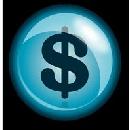
 |
|
| Financial Terms | |
| Cash value added (CVA) |
|
Information about financial, finance, business, accounting, payroll, inventory, investment, money, inventory control, stock trading, financial advisor, tax advisor, credit.
Main Page: tax advisor, investment, finance, inventory control, inventory, payroll, accounting, financial, Also see related: real estate, first time homebuyer, home, credit, financing, insurance, home buyer, home insurance, buy home, |
Definition of Cash value added (CVA)
Cash value added (CVA)A method of investment appraisal that calculates the ratio of the net present value of an
Related Terms:NPV (net present value of cash flows)Same as PV, but usually includes a subtraction for an initial cash outlay. PV (present value of cash flows)the value in today’s dollars of cash flows that occur in different time periods. Adjusted present value (APV)The net present value analysis of an asset if financed solely by equity Bond valueWith respect to convertible bonds, the value the security would have if it were not convertible Book valueA company's book value is its total assets minus intangible assets and liabilities, such as debt. A Book value per shareThe ratio of stockholder equity to the average number of common shares. Book value Carrying valueBook value.  CashThe value of assets that can be converted into cash immediately, as reported by a company. Usually Cash budgetA forecasted summary of a firm's expected cash inflows and cash outflows as well as its Cash and carryPurchase of a security and simultaneous sale of a future, with the balance being financed Cash and equivalentsThe value of assets that can be converted into cash immediately, as reported by a Cash commodityThe actual physical commodity, as distinguished from a futures contract. Cash conversion cycleThe length of time between a firm's purchase of inventory and the receipt of cash Cash cowA company that pays out all earnings per share to stockholders as dividends. Or, a company or Cash cycleIn general, the time between cash disbursement and cash collection. In net working capital Cash deficiency agreementAn agreement to invest cash in a project to the extent required to cover any cash  Cash deliveryThe provision of some futures contracts that requires not delivery of underlying assets but Cash discountAn incentive offered to purchasers of a firm's product for payment within a specified time Cash dividendA dividend paid in cash to a company's shareholders. The amount is normally based on Cash equivalentA short-term security that is sufficiently liquid that it may be considered the financial Cash flowIn investments, it represents earnings before depreciation , amortization and non-cash charges. Cash flow after interest and taxesNet income plus depreciation. Cash flow coverage ratioThe number of times that financial obligations (for interest, principal payments, Cash flow from operationsA firm's net cash inflow resulting directly from its regular operations Cash flow matchingAlso called dedicating a portfolio, this is an alternative to multiperiod immunization in Cash flow per common sharecash flow from operations minus preferred stock dividends, divided by the Cash flow time-lineLine depicting the operating activities and cash flows for a firm over a particular period. Cash-flow break-even pointThe point below which the firm will need either to obtain additional financing Cash management billVery short maturity bills that the Treasury occasionally sells because its cash Cash marketsAlso called spot markets, these are markets that involve the immediate delivery of a security Cash offerA public equity issue that is sold to all interested investors. Cash ratioThe proportion of a firm's assets held as cash. Cash settlement contractsFutures contracts, such as stock index futures, that settle for cash, not involving Cash transactionA transaction where exchange is immediate, as contrasted to a forward contract, which Cash-equivalent itemsTemporary investments of currently excess cash in short-term, high-quality Cash-surrender valueAn amount the insurance company will pay if the policyholder ends a whole life CashoutRefers to a situation where a firm runs out of cash and cannot readily sell marketable securities. Conversion valueAlso called parity value, the value of a convertible security if it is converted immediately. Discounted cash flow (DCF)Future cash flows multiplied by discount factors to obtain present values. Discretionary cash flowcash flow that is available after the funding of all positive NPV capital investment Equivalent annual cash flowAnnuity with the same net present value as the company's proposed investment. Exercise valueThe amount of advantage over a current market transaction provided by an in-the-money Expected future cash flowsProjected future cash flows associated with an asset of decision. Expected valueThe weighted average of a probability distribution. Expected value of perfect informationThe expected value if the future uncertain outcomes could be known Extraordinary positive valueA positive net present value. Face valueSee: Par value. Firm's net value of debtTotal firm value minus total firm debt. Free cash flowscash not required for operations or for reinvestment. Often defined as earnings before Future valueThe amount of cash at a specified date in the future that is equivalent in value to a specified General cash offerA public offering made to investors at large. Incremental cash flowsDifference between the firm's cash flows with and without a project. Intrinsic value of an optionThe amount by which an option is in-the-money. An option which is not in-themoney Intrinsic value of a firmThe present value of a firm's expected future net cash flows discounted by the Investment valueRelated:straight value. Ledger cashA firm's cash balance as reported in its financial statements. Also called book cash. Liquidation valueNet amount that could be realized by selling the assets of a firm after paying the debt. Loan valueThe amount a policyholder may borrow against a whole life insurance policy at the interest rate Market value1) The price at which a security is trading and could presumably be purchased or sold. Market value ratiosRatios that relate the market price of the firm's common stock to selected financial Market value-weighted indexAn index of a group of securities computed by calculating a weighted average Maturity valueRelated: par value. Net adjusted present valueThe adjusted present value minus the initial cost of an investment. Net asset value (NAV)The value of a fund's investments. For a mutual fund, the net asset value per share Net book valueThe current book value of an asset or liability; that is, its original book value net of any Net cash balanceBeginning cash balance plus cash receipts minus cash disbursements. Net present value (NPV)The present value of the expected future cash flows minus the cost. Net present value of growth opportunitiesA model valuing a firm in which net present value of new Net present value of future investmentsThe present value of the total sum of NPVs expected to result from Net present value ruleAn investment is worth making if it has a positive NPV. Projects with negative NPVs Net salvage valueThe after-tax net cash flow for terminating the project. Nominal cash flowA cash flow expressed in nominal terms if the actual dollars to be received or paid out are given. Noncash chargeA cost, such as depreciation, depletion, and amortization, that does not involve any cash outflow. Operating cash flowEarnings before depreciation minus taxes. It measures the cash generated from Original face valueThe principal amount of the mortgage as of its issue date. Par valueAlso called the maturity value or face value, the amount that the issuer agrees to pay at the maturity date. Parity valueRelated:conversion value Present valueThe amount of cash today that is equivalent in value to a payment, or to a stream of payments, Present value factorFactor used to calculate an estimate of the present value of an amount to be received in Present value of growth opportunities (NPV)Net present value of investments the firm is expected to make Price value of a basis point (PVBP)Also called the dollar value of a basis point, a measure of the change in Real cash flowA cash flow is expressed in real terms if the current, or date 0, purchasing power of the cash Relative valueThe attractiveness measured in terms of risk, liquidity, and return of one instrument relative to Replacement valueCurrent cost of replacing the firm's assets. Residual valueUsually refers to the value of a lessor's property at the time the lease expires. Salvage valueScrap value of plant and equipment. Scheduled cash flowsThe mortgage principal and interest payments due to be paid under the terms of the Standardized valueAlso called the normal deviate, the distance of one data point from the mean, divided by Statement of cash flowsA financial statement showing a firm's cash receipts and cash payments during a Statement-of-cash-flows methodA method of cash budgeting that is organized along the lines of the statement of cash flows. Straight valueAlso called investment value, the value of a convertible security without the con-version option. Symmetric cash matchingAn extension of cash flow matching that allows for the short-term borrowing of Target cash balanceOptimal amount of cash for a firm to hold, considering the trade-off between the Terminal valueThe value of a bond at maturity, typically its par value, or the value of an asset (or an entire Time value of an optionThe portion of an option's premium that is based on the amount of time remaining Time value of moneyThe idea that a dollar today is worth more than a dollar in the future, because the dollar Utility valueThe welfare a given investor assigns to an investment with a particular return and risk. Value-added taxMethod of indirect taxation whereby a tax is levied at each stage of production on the value Value-at-Risk model (VAR)Procedure for estimating the probability of portfolio losses exceeding some Related to : financial, finance, business, accounting, payroll, inventory, investment, money, inventory control, stock trading, financial advisor, tax advisor, credit. |